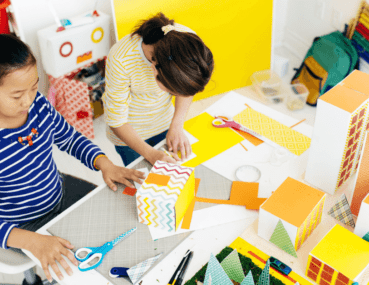
When it comes to education, many people are confused as to which approach to studying yields the most results. Is it more beneficial to have hands-on experience on a subject, or is reading and acquiring theoretical knowledge better?
The short answer is that hands-on activities are much more beneficial than a passive approach to learning such as reading and listening. Studies have shown how effective hands-on learning methods are, especially for STEM.
In fact, here are the best ways hands-on activities vastly improve the STEM learning experience.
Technical experience is richer than theoretical knowledge.
Many experts agree that learning through hands-on experience is more impactful than theoretical knowledge as students are actively training their abilities to think critically and find creative solutions to the problems that are presented in front of them. During hands-on learning activities, students can work together in groups to learn team and problem-solving skills. By doing so, they are able to actively engage in what they are learning about and work together to brainstorm creatively to solve these problems.
For example, reading up on how to build a robot and having the technical knowledge from books is vastly different from building an actual robot from scratch. Reading provides a one-dimensional source of information whereas building requires multifaceted technical skills. If the student is building a robot as part of a group project, it also builds interpersonal and cooperative skills.
Furthermore, when students practice what they have learned through books by working on a hands-on project, they are actively strengthening their knowledge and skills in those fields. This can also have a carry-over effect where these skills that are being built are able to translate to other facets of their lives.
To be able to fully master a subject, students must be able to utilize and apply concepts that are learned in books to real-life practices. Hands-on learning provides them the basis to start this journey of learning and mastery.
Related: 4 Signs Your Child Might Excel in a Career in STEM
Encourages experimentation.
Learning through textbooks provides fundamental knowledge to students, however, this fundamental knowledge is axiomatic and is rarely approached as an open-ended matter. As opposed to learning through textbooks, hands-on learning encourages students to be proactive and learn through action.
Through hands-on practice, students are able to make mistakes. They are able to learn from it, reflect upon these mistakes and innovate further upon their ideas in a stress-free manner. This trial by error approach to learning helps students gain a greater comprehension of concepts and also lets them understand that failure is not an inherently bad thing to be afraid of, but rather a learning process and a necessary stepping stone to success.
In other words, textbook learning only provides students with the answers to the problems. Hands-on experience allows students to be able to not only find these answers by themselves, but also understand why that is the answer.
Students are able to retain more knowledge.
Knowledge and information is much easier to remember when students are actively engaged in the learning process. Learning through reading might translate to temporary knowledge as it is memorized and forgotten later. However, hands-on experience helps retain that knowledge as it is not memorized but rather internalized.
To put it into perspective, a biology student might not be able to remember the names of each organ in an anatomy diagram after an exam after they have memorized the textbooks. However, they might remember a class where they had to personally perform a dissection many years later, and even retain the information learned that day.
In fact, studies have shown that STEM students who engage in hands-on activities improved significantly in their exam results as compared to the students who were engaged in purely learning through textbooks and classroom lectures. The studies explain that by engaging in activities such as movement, participating in discussions and actively brainstorming, students activate multiple areas in their brain. As more parts of the brain are being used, the more likely they are to be able to retain information.
Related: 5 Activities for Your Child That Teach Critical Thinking
Hands-on activities deepen a student’s understanding.
It is a very different feeling when you are just reading about something, as compared to if you are getting your hands dirty and learning the ropes personally. Reading provides great and substantial knowledge, however, it is one dimensioned as compared to the multifaceted learning experience that hands-on activities provide.
This isn’t to say that reading is bad, in fact, reading and listening to information is what builds up your foundation for comprehension. Hands-on experience builds upon that and solidifies this foundation even further. Thus the best learning experience is a healthy mix of both passive and hands-on activities. At Engineering For Kids, we encourage hands-on exploration of various engineering disciplines that allow for students to build on their theoretical knowledge and further deepen their understanding of each concept. For information about camps and after-school program openings, find your closest location.




